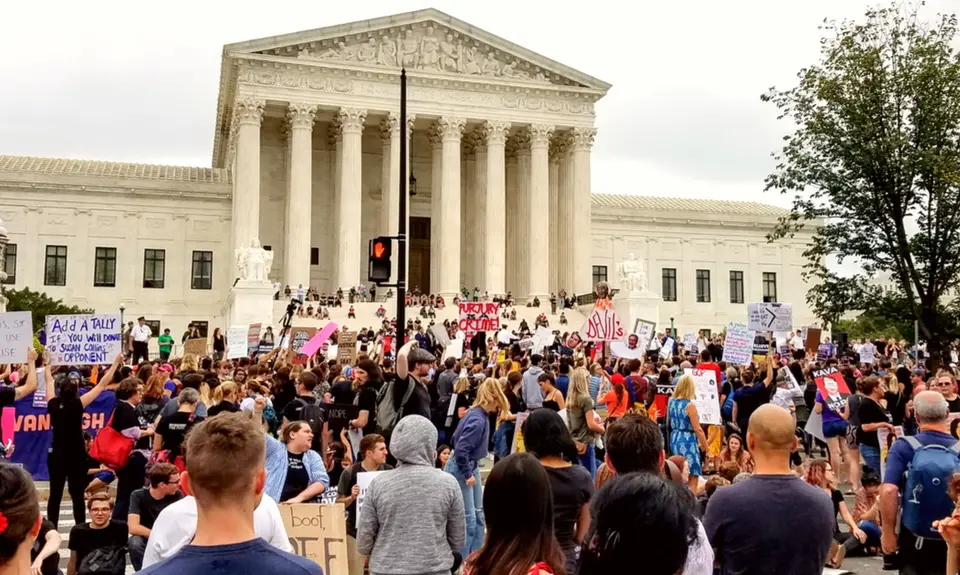In a 6-3 ruling made possible by the 3 Trump justices (Neil Gorsuch, Brett Kavanaugh and Amy Coney Barrett), the Supreme Court invalidated a federal rule that subjects semi-automatic rifles equipped with bump stocks to the same restrictions and penalties as machine guns. The result could well be more mass shootings across the US. The Supreme Court’s June 2024 ruling, the first of two gun-related cases to be decided this Term, was in Garland v Cargill.
What is the background of the machine gun and bump stock bans and this case?
Since the 1930s, federal law has banned machine guns, defined as guns that shoot “automatically more than one shot, without manual reloading, by a single function of the trigger.” More recently, manufacturers have developed bump stocks, which can effectively transform semi-automatic guns, which are not banned, into machine guns so that one pull of a trigger can produce dangerous multiple gun shots.
In 2017, a lone gunman used semi automatic rifles equipped with bump stocks to rapidly fire hundreds of rounds into a crowd in Las Vegas, killing 58 -people and wounding 500 more. After that, the federal Bureau of Alcohol Tobacco and Firearms (ATF) proposed and then adopted a rule that serves to “clarify” that any semiautomatic gun equipped with a bump stock is a prohibited machine gun. ATF’s rule ordered bump stock owners to either destroy or turn over their bump stocks to ATF to avoid criminal prosecution.
Michael Cargill surrendered several bump stocks to ATF under protest and filed a federal lawsuit to challenge the rule. A federal district court upheld the rule, but the full Fifth Circuit held that it was invalid. The Justice Department took the case to the Supreme Court.
How did the Supreme Court rule and why is the decision harmful?
In a 6-3 decision written by Justice Thomas, which was joined by all three Trump justices as well as Justice Alito and Chief Justice Roberts, the Court affirmed the Fifth Circuit and ruled that the bump stock rule is invalid under the federal machine gun law. Thomas used diagrams and mechanistic descriptions to analyze machine guns and weapons equipped with bump stocks. Justice Thomas did not disagree that whether the firearm is a machine gun or a semi automatic gun with a bump stock, the shooter only has to actively pull the trigger once to cause multiple shots. But because the internal functioning differs slightly, with a machine gun’s repeated fire caused by back-and-forth movement of internal parts as opposed to back-and-forth movement of the entire forward portion of a bump stock-modified gun, he maintained that defining the bump stock-modified gun as a machine gun violated the statute.
Justice Sotomayor vigorously dissented on behalf of herself and Justices Kagan and Jackson. As she put it, “When I see a bird that walks like a duck, swims like a duck, and quacks like a duck, I call that bird a duck.” Instead of using that simple principle, she suggested, the majority ruling “casts aside Congress’ definition of ‘machinegun’ and seizes upon one” based on Thomas’ complex description “that is inconsistent with the ordinary meaning of the statutory text and unsupported by context or purpose.” The majority’s “artificially narrow definition” of machine gun, she concluded, “hamstrings the Government’s efforts to keep machine guns, including bump stock-modified weapons, “from gunmen like the Las Vegas shooter”, with “deadly consequences.”
This decision by the right-wing Court majority was based on the statute, not the Constitution, so it can be modified by Congress. In fact, Majority Leader Schumer has announced that he plans to call for a vote in the Senate this week to restore the bump stock ban. Given the difficulties in enacting new gun safety legislation, however, the odds of final passage of such a measure are probably low. And the Court has yet another gun safety related case to decide this term, this one concerning keeping guns away from domestic abusers, so we have yet to see all the damage that the Court majority may do to gun safety this term. The decision also reinforces the importance of the President and Congress adding fair-minded justices to the Supreme Court when future opportunities arise.
